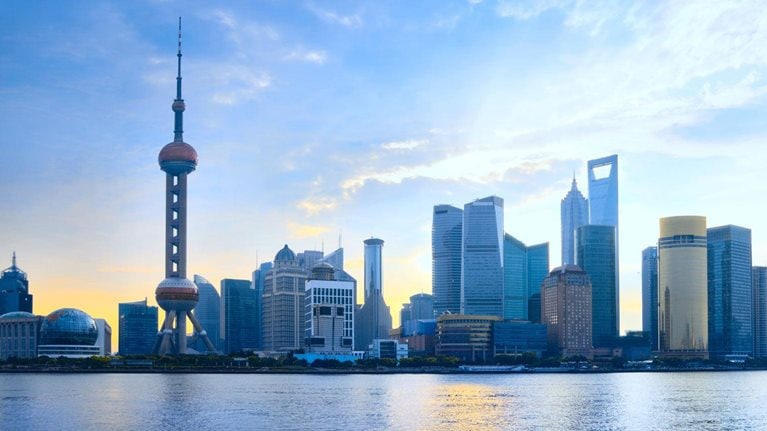By 2030, 1 billion consumers will live in China's cities. Chinese and global companies are well aware of the huge size and potential of this emerging urban market. But businesses should shift their sights from a panoramic view of the opportunity to a close-up of the dynamics of urbanization. To be successful, they need to keep pace with the rapidly changing managerial strategies that city leaders are employing as their cities expand.
China's urbanization is largely a local phenomenon. City mayors are the most powerful movers and shapers of the process. Their effectiveness—or lack of it—should be a key component of companies' strategic planning for the Chinese market. New research by the McKinsey Global Institute (MGI) argues that business has a chance to play a key role as cities mature. Companies can bring not only capital but also an infusion of knowledge and can help guarantee greater efficiency and productivity from major public projects.
The scale of the urbanization phenomenon is startling. MGI estimates that, between now and 2025, China's cities could pave 5 billion square meters of roads and build up to 170 new mass-transit systems (twice the number that all of Europe has today). By 2025, cities will construct 40 billion square meters of floor space in 5 million buildings, of which up to 50,000 will be skyscrapers—the equivalent of building up to two Chicagos every year. The incremental growth alone in urban China's consumption between 2008 and 2025 will be equivalent to the creation of a new market the size of Germany's in 2007.
Hungry for energy
With current trends, energy demand is set to more than double, requiring massive expansion in capacity—as much as 1,200 gigawatts of extra capacity between now and 2025, MGI estimates. China's freight volumes—largely carried by road—will quadruple by 2025. Beijing has recently allowed the private sector to participate in infrastructure building (such as toll roads), mainly in joint ventures with local governments or state-owned enterprises.
China's huge growth as a consumer market and its megasized infrastructure projects will doubtless offer rich rewards for business. Yet multinational corporations have tended not to look much beyond China's fast-growing eastern seaboard. In the next decades, however, it is China's midsize cities where most of the burgeoning middle class will live and where most residential construction growth will occur.
Some cities haven't even touched the edges of business' radar screens. During the course of MGI's research in China, we "discovered" an additional 195 urban centers that China does not designate as cities but which are cities in terms of size, population, and stage of development. They are also growing rapidly. These cities could have substantial future commercial potential, and they illustrate the importance of looking beyond China's most high-profile economic powerhouses.
Pinpointing opportunities geographically is one aspect of any entry or market expansion strategy. Keeping pace with the evolution of urban development strategies is another. Cities that have spent the past 20 years or more maximizing their gross domestic product growth at virtually any cost—environmental and social—now face a heavy investment bill as they seek to mitigate the pressures that have mounted. Pollution and congestion are reaching critical proportions in many cities. This will provide openings for innovation in areas such as energy conservation, water recycling, and clean technology, not to mention power generation and transportation.
Maximizing efficiency
Beyond firefighting today's intensifying urban stress, China's city leaders know that they face a monumental managerial task as they seek to absorb an additional 350 million more urban dwellers by 2025, of whom 240 million will be migrants. Many cities are already thinking creatively about how to meet this challenge through policies that boost the efficiency or productivity of urban expansion—the efficiency of resources, of urban and transport planning, and of administration.
Business has an opening in helping mayors to fix not only the "hardware" but also the "software" of cities. Local governments have already shown themselves willing to enter into partnership with the private sector, including multinationals. Take training: A number of Chinese and multinational companies have instituted internship and training programs at the city level, aimed at raising graduate quality, in conjunction with provincial and city governments. Zhejiang province has encouraged private capital to invest in education, making funding more efficient and thereby producing improved results in terms of graduate employment rates for less money than richer provinces.
A nationwide program of "urban productivity," replicating vanguard cities' best practice and innovation across China, could save $220 billion in public spending by 2025, cut sulfur dioxide and nitrogen oxide emissions by upward of 35 percent, and halve water pollution. Business has the potential to play a partnering and enabling role in delivering these significant benefits—opening up new market opportunities for themselves in the process.
Diana Farrell is director of the McKinsey Global Institute, McKinsey's economics research arm.
This article originally ran in Businessweek.

